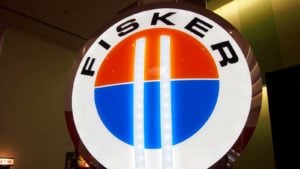Read The Full Article On: Investorplace
SPAQ stock could provide investors with massive long-term gains, but ignore management’s projections
In July, blank-check company Spartan Energy Acquisition (NYSE:SPAQ) stock shot up 56% after announcing a planned merger with Fisker Auto. The electric vehicle (EV) company, founded by car designer Henrik Fisker, will list on the NYSE later this year through the special purpose company. And at $14, SPAQ stock could reward investors handsomely.

Source: Eric Broder Van Dyke / Shutterstock.com
I’m typically wary of growth companies without any operating history. Fisker’s management also has completely unrealistic expectations for the company’s growth.
But a closer look at the company business shows a company worth far more than its current $4.3 billion valuation. While I wouldn’t put in my entire life savings into this backdoor listing, here’s why SPAQ stock could become the next Tesla (NASDAQ:TSLA) if they play their cards right.
SPAQ Stock: Floor at $10
For those less familiar with the SPAQ/Fisker deal, here’s a quick primer:
A particular class of firms, known as Special Purpose Acquisition Companies (SPAQs), are blank-check companies that take other firms public. They typically hold cash in trust, issue shares worth $10, and either list a company or dissolves within a timeframe.
Spartan Energy, one of these SPAQs, was created by private equity giant Apollo Global Management. And in July, the blank-check company agreed to merge with Fisker, an electric vehicle startup.
Why is this important? That’s because SPAQ stock should theoretically never fall far below its $10 liquidation value before its merger with Fisker. That means investors have reasonable downside protection.
A Leap of Faith: What’s SPAQ Worth?
My colleagues at InvestorPlace have already written some excellent articles on why SPAQ might be undervalued, given Fisker’s growth estimates. Even my estimates put SPAQ share value at $21.
Would-be investors, however, should avoid using Fisker’s estimates in their valuations. Here’s why.
Management Dreams of $13.2 Billion in Revenue by 2025
In July, Fisker released an investor presentation projecting $13.2 billion in revenue by 2025. By outsourcing production to Volkswagen (OTCMKTS:VWAGY), they reasoned, the company could instantaneously ramp up production to meet surging demand.
That seems like a stretch, but let’s run with that for a moment. Imagine that management delivers on the proposed $13.2 billion revenue and a 14.4% EBIT margin. Using a 2-stage discounted cash flow (DCF) model shows a company value of $25.6 billion, or $87 per share, a 480% upside.
Skeptical readers will immediately see an issue: $13.2 billion is a lot of money for a car maker. To reach that target, Fisker would have to sell 250,000 SUVs a year, or 62,000 more units than Tesla’s entire 2019 U.S. sales.
Can that happen? Of course. But here’s why investors should stay skeptical.
Realistic Expectation: $5 Billion in Revenue
There are three reasons why investors shouldn’t expect more than $5 billion in revenue by 2025.
1. Car Dealerships. U.S. states largely prohibit direct sales of cars to consumers. That means Fisker will face an uphill battle to open “brand experience centers” and pop-up stores. Tesla took years to establish itself, and many states still ban the EV company from making in-person sales.
2. One Base Model. Fisker initially plans to sell just one SUV model, the Fisker Ocean. To reach $13.2 billion in revenue by 2025, the company would have to become roughly as popular as the Honda Accord or Jeep Grand Cherokee in the U.S.
3. Financing Deals. Fisker plans to offer its leases at $379 monthly on a $2,999 down payment. No fixed term, unlike Tesla’s 36-month minimum. That means each “sale” will only net the company $7,547 in its first year.
The final point could wreak havoc on Fisker’s balance sheet: having no fixed lease terms will reclassify the deals as “capital leases” rather than “operating leases.” In other words, unless their accountants can come up with a creative way to offload the leases or reclassify them, Fisker can only recognize $7,547 revenue in its first year.
Had Fisker’s management thought of that, they would quickly realize that *if* 100% of their customers leased rather than bought, generating $13.2 billion (from a standing start) means selling 1.75 million leases, the equivalent of 10% of the U.S. car market.
At $5 Billion Revenue, What’s SPAQ Worth?
To see what’s at stake, let’s make a couple of assumptions:
- Revenue: $5 billion in 2025, $11.2 billion in 2029
- EBITDA margins: 12% in 2025, 23% in 2029
- Working capital: 15% of revenue
- Other assumptions: 8.2% discount rate, 4.5% terminal growth
Using a 2-stage DCF model comes to a fair value of $6.2 billion, or $21 per share. That’s a 43% upside.
However, there’s significant uncertainty in Fisker’s leasing situation. If the company needs 25% working capital to fund its capital lease program, its fair value immediately drops to just $16 per share, leaving only a 9% upside.
Should Investors Buy SPAQ Shares?
On balance, SPAQ stock remains a buy. The $10 pre-merger price floor means investors have a limited downside if they buy today. And if Fisker succeeds, investors stand to earn multiples of their original investment.
The company also has strong management, packed with BMW (OTCMKTS:BMWYY) and Volkswagen veterans. And despite CEO Henrik Fisker’s prior EV startup failure (prompted by a total recall of its outsourced batteries), he looks far better to succeed this time. The Spartan Energy team consists of experienced private equity managers from Apollo Global and may yet provide a viable financing source for Fisker’s leasing program.
As Fisker looks to move beyond SUVs and into luxury sedans in 2023, investors should pay attention. If all goes well, Fisker and SPAQ could end up as the next Tesla.

